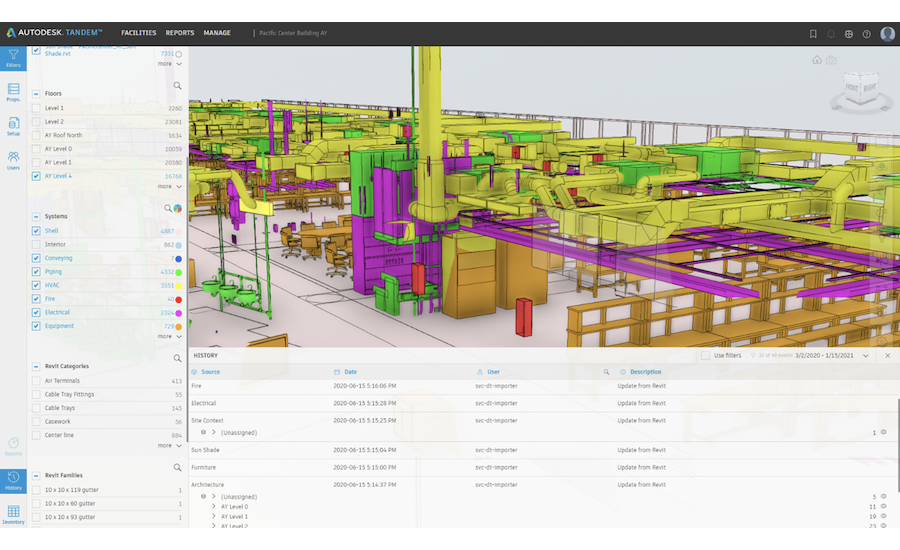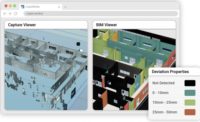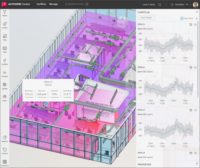Autodesk has been expanding its offerings in the construction and operation phase of projects in recent years, so its latest move into digital twins should come as no surprise. The company first announced Tandem, its digital twin coordination platform, at Autodesk University 2020. Tandem entered public beta earlier this month, allowing anyone to start building out digital twins of their Revit projects.
“Our AEC customer base sees a lot of opportunity to deliver more to their owners in terms of the data deliverable,” explains Robert Bray, senior director and general manager for Autodesk Tandem. “And beyond that handover, if this is a digital asset that reflects the as-built model, it can connect to operational systems and help answer the owner’s questions.”
The digital twin concept is not new, but Bray says the focus should be less on building out the most detailed model and more on capturing relevant data early on that operations will eventually need. “A true digital twin is connected to operations, and today these are usually created through a very expensive, bespoke date-collection exercise,” says Bray. Tandem is designed to function in parallel with the design and construction process, rather than requiring a significant amount of additional work, he says.
Tandem is a separate application from Revit, but it does have some interconnected links thanks to being part of Autodesk Construction Cloud. “When you talk about the vast quantities of information created in a Revit model, how much of it do we need for an operational digital twin? The answer is only a fraction,” says Bray. Data from the BIM flow into Tandem through Autodesk Forge, so there’s no need to load up a separate Revit plugin. Project documents can flow between Revit and Tandem through BIM 360 Docs. Tandem also has links into Autodesk Build, allowing for as-builts to be captured in the digital twin as construction progresses.
While Tandem can support a densely modeled BIM, it also is designed around integrations into the computerized maintenance and management systems as well as the supervisory control and data acquisition systems used by building owners. “Instead of having to later dig into old BIM files or walk a facility to document everything, we can curate everything within Tandem,” says Bray. The idea is that owners and operators will only have to load up Tandem to review their facilities, instead of cracking open a full Revit model. “The owner will be using Tandem to interface with this data for years after the project is complete, and they’ll be able to use it as a reference tool, with everything on a single pane,” says Bray.
Quickly surfacing relevant information is a key part of Tandem's pitch to owners. "Owners can start asking: Where are all the assets that currently have open maintenance work orders? What are the chances of this asset failing in the next five years?" said Brian Melton, chief technologist at Black & Veatch in an Autodesk press announcement about the Tandem beta. "More connected systems and predictive insights that are visually aggregated using modern BIM/design data will be part of the handover package of the future."
Bray notes that Autodesk began working on Tandem in February 2020 and is now in open beta only a year later, an unusually fast development cycle for a new standalone application at the company. Bray says that Autodesk plans to add more features to Tandem this year, including a validation system to confirm if materials and components are installed as specified in the model. “So if you say in Tandem that these are the asset types from these suppliers to be installed, we will validate that at key points in the project and check if it happens.”
The Tandem public beta is currently open to all users. Most of the functionality right now is based around how Tandem ingests data from Revit. Bray says that pricing is still being worked out, but he expects it will likely be on a per-project basis rather than per-user, given the long shelf-life of digital twins.






Post a comment to this article
Report Abusive Comment